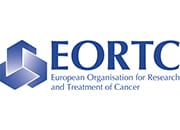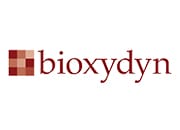ASSESSMENT
OF DIILD
Using imaging biomarkers to understand potential drug side effects in the lung.
- Drug induced interstitial lung disease (DIILD) can be caused by over four hundred different drugs in humans.
- DIILD caused by individual drugs is often not detected prior to late stage expensive clinical trials (including post marketing).
- Once developed in a patient the DIILD management usually involves CT assessment but there is no early, standardised imaging biomarker (IB) that can be exploited early on in the drug development process that is truly translational.
- There is an urgent need for specific and sensitive IBs of DIILD both for use preclinically and early phase drug development to avoid progressing drugs with DIILD liability, and for use in regulatory drug development and post-marketing to manage patients and assess reversibility.
Our ambitions
- We aim to use clinically recognised imaging techniques, such as Magnetic Resonance Imaging (MRI), Computed Tomography (CT) and Positron Emission Tomography (PET), to seek sensitive imaging biomarkers that will predict early stages of DIILD.
- These imaging biomarkers will be evaluated against standard physiological measurements, clinical scoring systems and patient outcome and translate these back to preclinical models used to evaluate new medicines during the early stages of drug development.
Imaging modalities
Magnetic Resonance Imaging (MRI) Provides structural, functional and metabolic information on any anatomy without the use of ionising radiation. Delivers exquisite tissue contrast.
Computed Tomography (CT) Produces high resoltions images both in vivo and ex vivo to allow macro-historical assessements to be made especially valuable for lung and bone disease.
Positron Emission Tomography (PET) Measures uptake, distribution and concentration of radio-labelled compounds in vivo.
Ultrasound Real time multi planer imaging of target organs and Doppler for blood flow evalutation.
Single Photon Emission Computed Tomography (SPECT) Real time multi planer imaging of target organs and Doppler for blood flow evalutation.
Optical Imaging Ability to measure fluorescence and bioluminescence at a molecular level allowing the tracking of labelled molecules and reporting of gene expression.
- Multicentre clinical studies of rheumatology and cancer patients that are prescribed medicines with known lung side effects (safety liabilities) will be conducted at Universities of Sheffield, Manchester and Leeds.
- Novel and standard non-invasive imaging techniques will be investigated using, primarily, MRI, CT and PET.
- These techniques will result in imaging biomarkers that can measure structural, ventilation, perfusion and specific mechanisms of lung pathology that present during the occurrence of DIILD in these patients.
- Concurrently similar techniques will be applied to preclinical studies where DIILD can be replicated.
The techniques to be used will include:
- CT based structural imaging using texture analysis to determine key radio-pathological features.
- MRI 3D UTE to provide high definition structural information on the lung that will measure changes in the lung parenchyma associated with inflammation or tissue changes (e.g. fibrosis).
- Standardised free-breathing 3-D Dynamic contrast-enhanced MRI (DCE-MRI) to provide information on pulmonary perfusion, first pass and delayed enhancement contrast kinetics, providing insights into vascular resistance, changes in endothelial permeability and leakage space.
- Dynamic oxygen-enhanced (OE) MRI to provide quantitative information on gas transfer and alveolar damage.
Impact
- Through a preclinical/clinical translational approach reduce the number of drugs reaching clinical trial phase with underlying safety liabilities.
- Provide standardised imaging protocols and research and commercial assays for lung imaging biomarkers.
- Provide robust, well characterised and clinically relevant endpoint animal studies that will ultimately reduce and refine animal studies.
- Better manage patients with apparent DIILD in clinical trials and post-marketing through sensitive and specific imaging techniques.
- The DIILD clinical study with 129Xe and 1H lung MRI and CT is the first multi-centre study and will provide a valuable foundation for future clinical trials for respiratory diseases in general.












